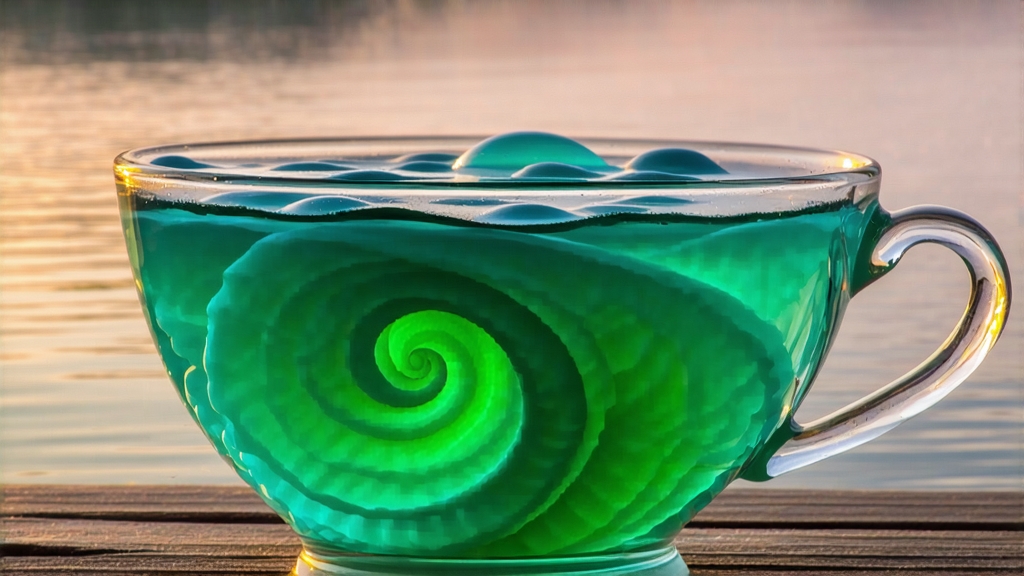
Biluochun, whose name translates literally to “Green Snail Spring,” is one of China’s ten most celebrated teas, yet it remains a delicate secret outside serious tea circles. Grown in the mist-cradled hills that rim eastern Lake Tai in Jiangsu province, this emerald-green tea is prized for its improbably tiny spiral shape, downy silver tips, and an aroma so fragrant that, according to Qing-dynasty court records, it once out-perfumed the palace gardens. To understand Biluochun is to listen to a 1,200-year dialogue between monks, poets, emperors, and the cool lake air that shapes every leaf.
Historical whispers
The first written mention appears during the Tang dynasty (618-907), when a mountain temple near Dongting Peak offered “Xia Sha Ren Xiang” (“Astounding Fragrance”) to traveling scholars. By the late Ming era, local growers had refined picking and firing techniques; the Kangxi Emperor (r. 1661-1722) renamed it Biluochun after its snail-like curl and the green jade color that reminded him of spring waves on Taihu. Imperial favor turned a regional curiosity into tribute tea, carried 1,400 km north by canal barges locked in clay jars padded with orange peel to preserve freshness. Even after the fall of the Qing, Biluochun survived war and revolution because the Dongting villagers hid their mother bushes under banana leaves, pretending the terraces were vegetable plots.
Micro-terroir: one lake, two mountains, three mists
Authentic Biluochun comes only from the Dongting East and West Mountains—actually limestone ridges poking through Lake Tai’s surface, creating a natural amphitheater of humidity. Three overlapping “mists” nurture the tea: nocturnal lake evaporation, morning mountain clouds, and afternoon bamboo forest steam. The diurnal temperature swing can exceed 10 °C, coaxing the plants to store amino acids—especially L-theanine—yielding the tea’s signature sweet-umami broth. Soils are fluvial sand mixed with weathered shale, fast-draining yet mineral-rich; locals say the lake’s microscopic diatoms drift uphill and settle on tea buds, adding a hint of marine minerality that trained palates can detect in the finish.
Cultivar lineage
The original landrace is a seed-propagated China-type bush known colloquially as “Dongting群体种” (qunti zhong). Its leaves are micro-small, allowing the tight spiral shape. In the 1980s, clonal selections such as “Dongting 7” and “Dongting 11” were released to boost yield and frost resistance, yet purists insist only the mixed-species old-garden leaf delivers layered aroma. Farmers intercrop peach, plum, and loquat trees; petals fall onto tea rows, and some botanists argue this floral carpet contributes to the tea’s fruity nuance—an elegant case of polyculture aromatics.
Harvest calendar: the 6-hour window
Picking begins when 3 % of the buds reach “one flag, one shoot” stage—meaning the first leaf partially unfurls like a tiny banner beside the tip. The ideal pluck is 1.6–2.0 cm long and weighs 0.12 g; 70,000 such shoots yield just 500 g of finished tea. Work starts at 5:30 a.m., when lake mist still blocks sunlight and enzymatic oxidation is minimal. By 11:30 a.m., the sun burns off the haze, raising leaf temperature and ending the harvest window. Pickers wear bamboo hats but no gloves; fingertip skin must feel the exact snap point to avoid the bruising that would blacken the leaf margin during firing.
Crafting the spiral: five motions in 40 minutes
Within 30 minutes of plucking, the leaves are spread 2 cm thick on bamboo trays to lose surface water; this “soft withering” reduces grassy notes. The critical step is shaqing (kill-green) performed on a 160 °C cast-iron pan brushed with Dongting spring water. A master maker uses five hand motions—cui (shake), ta (press), mo (rub), nie (pinch), and tiao (lift)—all executed in 3–4 seconds per handful. The motion sequence coils the leaf around the fingertip, locking the spiral while rupturing only 18–22 % of cell walls, enough to release aromatic precursors yet preserve brightness. After 8 minutes, the leaf